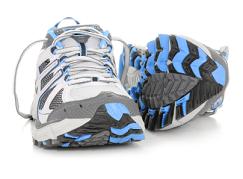Shoe Buying Guide

1. Buy your shoes at the end of the day, when your feet are likely to be swollen or tired.
2. Wear the shoes and walk in the shop for at least ten minutes before purchase, as your feet spread as you walk.
3. Buy the lightest shoes you can.
4. Try to get the softest most comfortable soles and uppers that are available.
5. If they are uncomfortable in any way, reconsider those shoes. Your feet don't "give" and leather (the skin of an animal) won't give that much either.
6. With higher heels make sure that the heels don't slip off as you walk, because you will need to contract your toes to hold them on.
7. Synthetic materials such as plastic, corfam, or even patent leather don't breathe or give and can get very hot and thus should be avoided except for use in wet or winter conditions.
8. If you find a style or last that you are comfortable with always try to stick with that one. There are very few standards for shoe sizing and lasting.
9. Buy the right shoe for the right activity, cross trainers for running or walking, court shoes for tennis or squash, etc. and high heel or fancier style shoes for a night out rather than all day for walking.
10. Designer name shoes although pricey are not always the best in either make or fit, so don't assume that more expensive is always better.